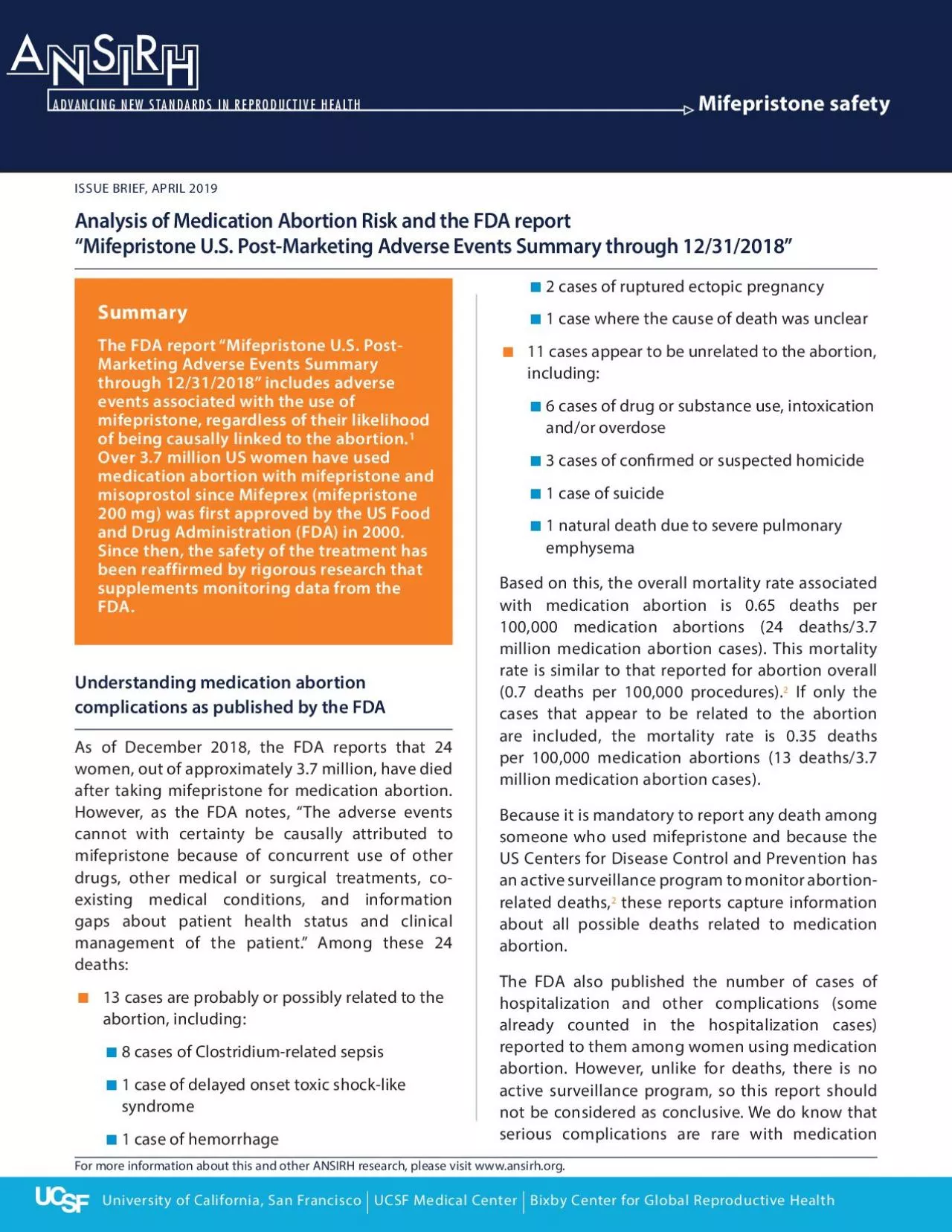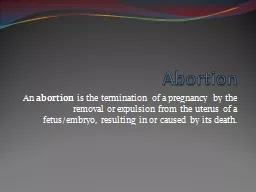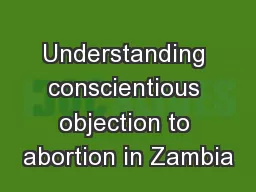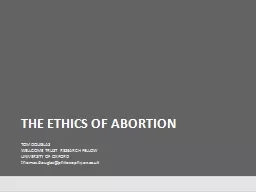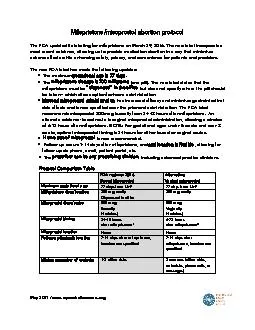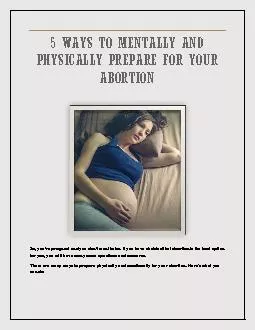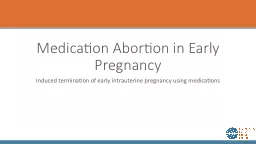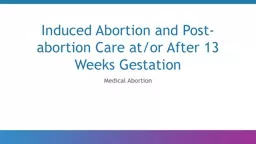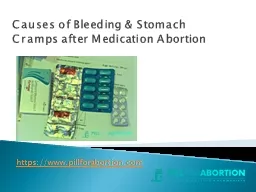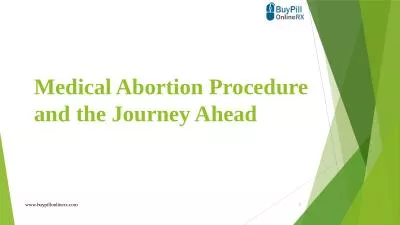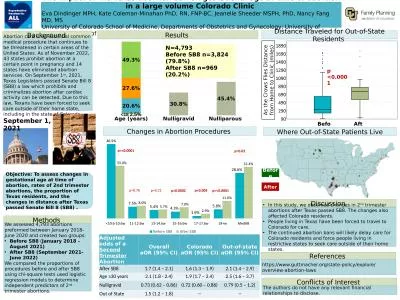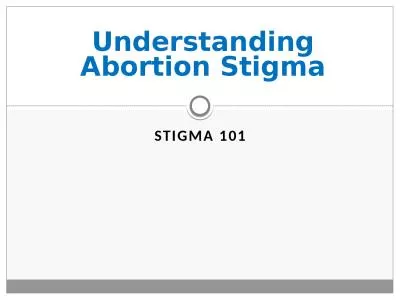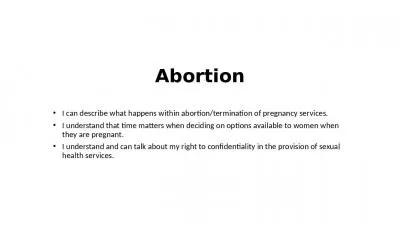PDF-Understanding medication abortion
Author : susan2 | Published Date : 2022-09-01
complications as published by the FDA As of December 2018 the FDA reports that 24 women out of approximately 37 million have died after taking mifepristone for medication
Presentation Embed Code
Download Presentation
Download Presentation The PPT/PDF document "Understanding medication abortion" is the property of its rightful owner. Permission is granted to download and print the materials on this website for personal, non-commercial use only, and to display it on your personal computer provided you do not modify the materials and that you retain all copyright notices contained in the materials. By downloading content from our website, you accept the terms of this agreement.
Understanding medication abortion: Transcript
Download Rules Of Document
"Understanding medication abortion"The content belongs to its owner. You may download and print it for personal use, without modification, and keep all copyright notices. By downloading, you agree to these terms.
Related Documents

